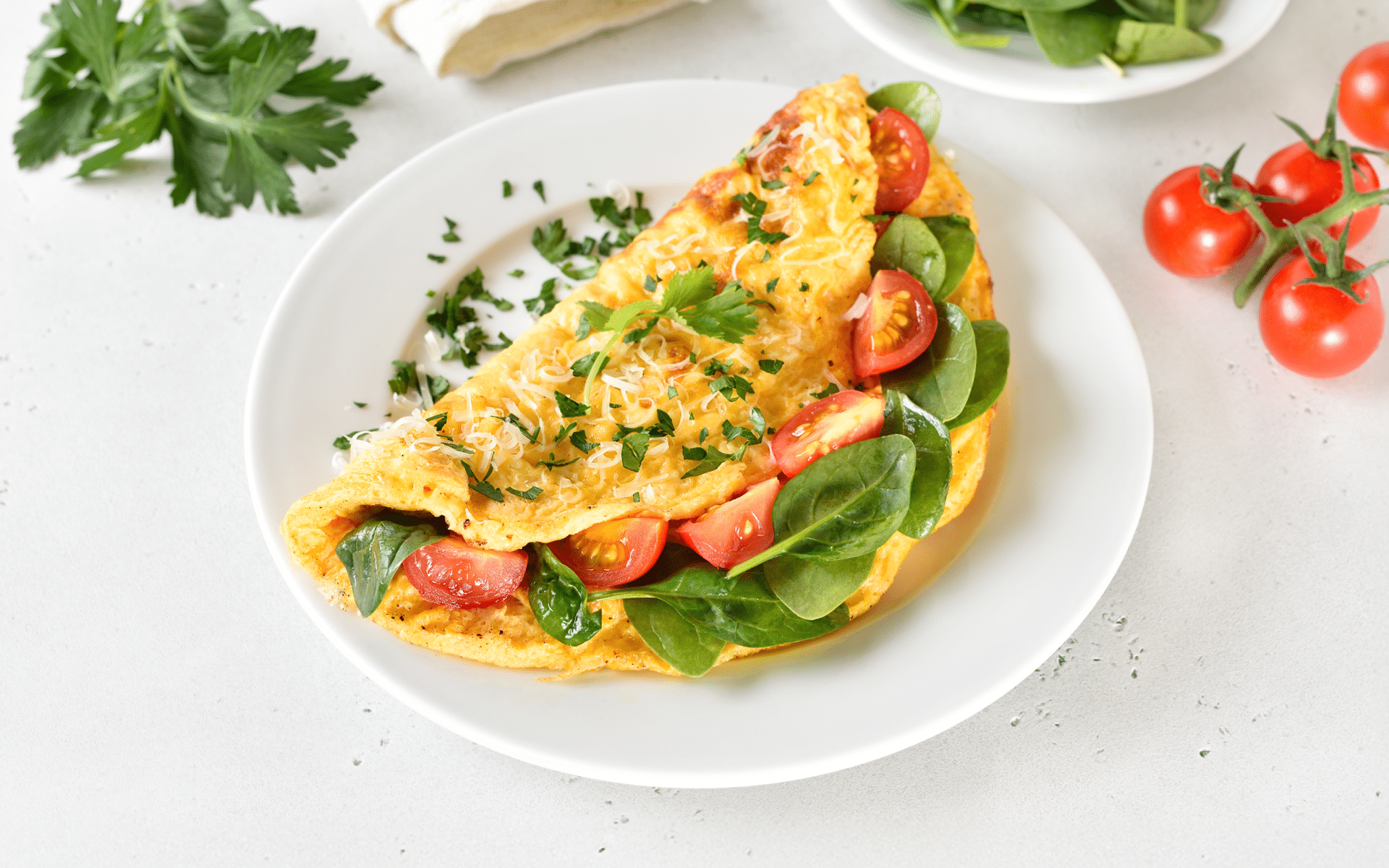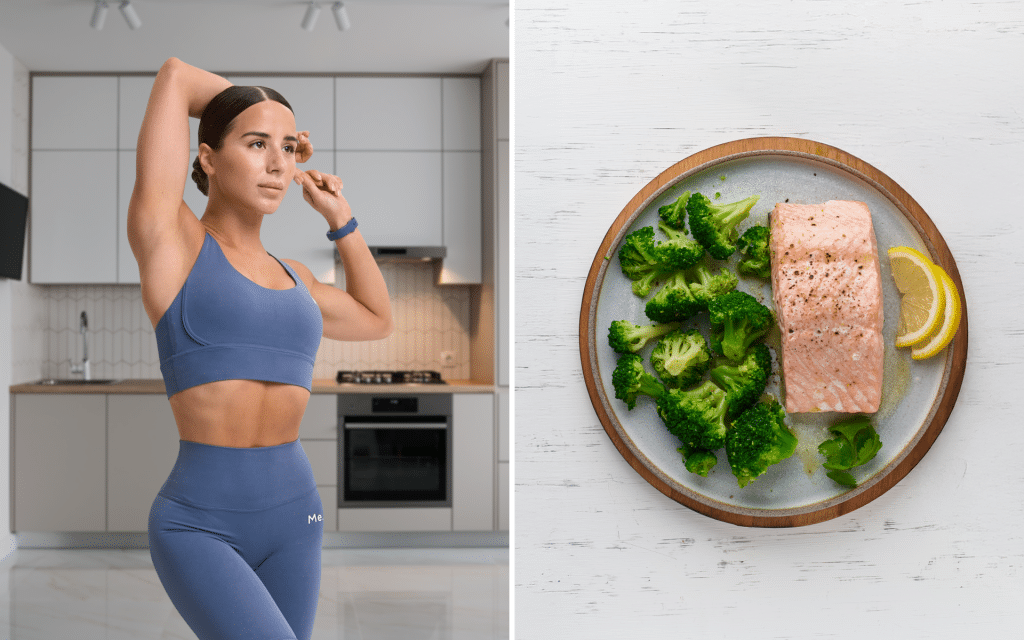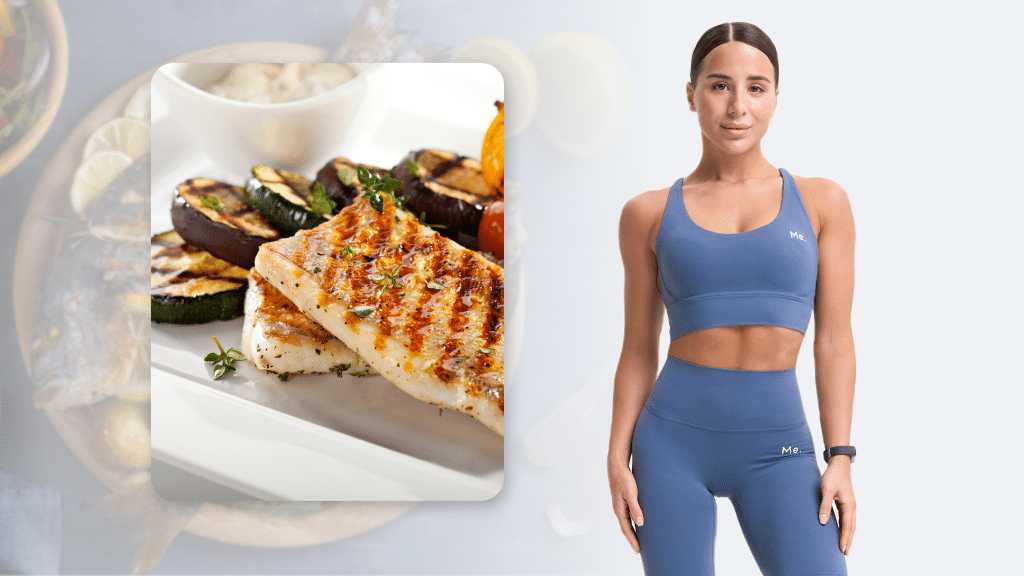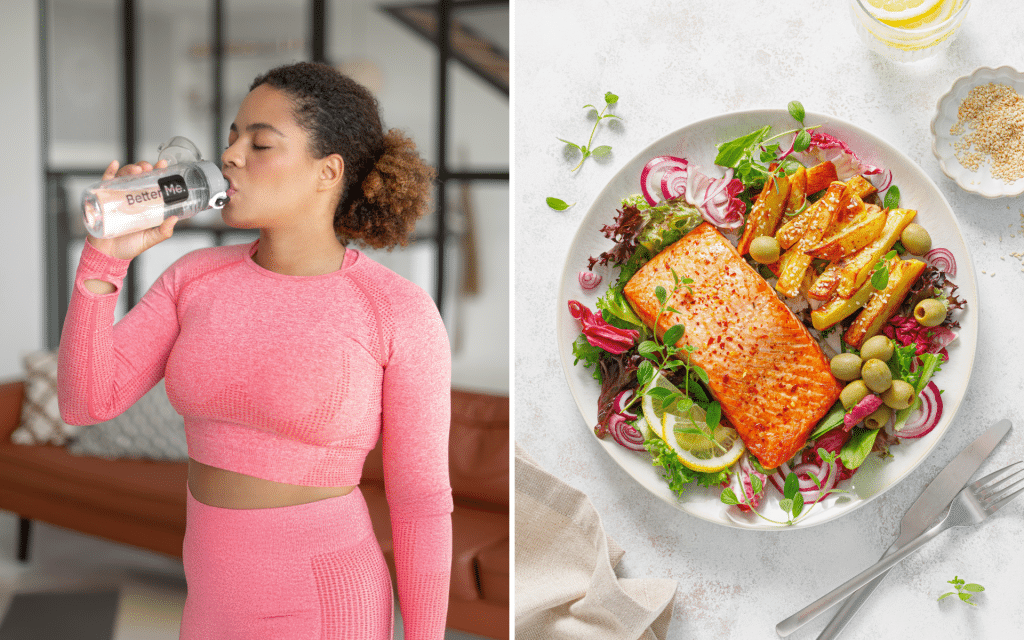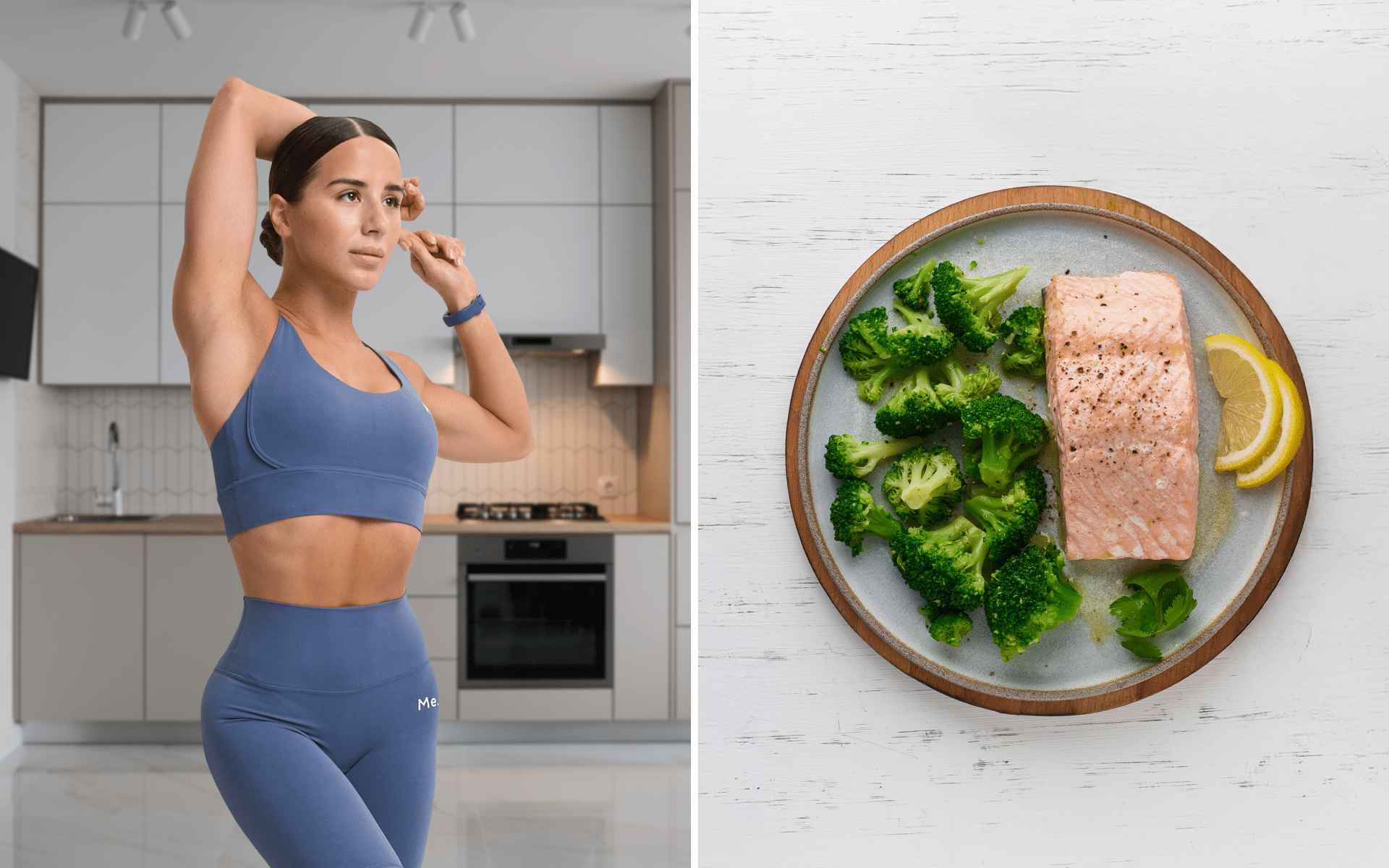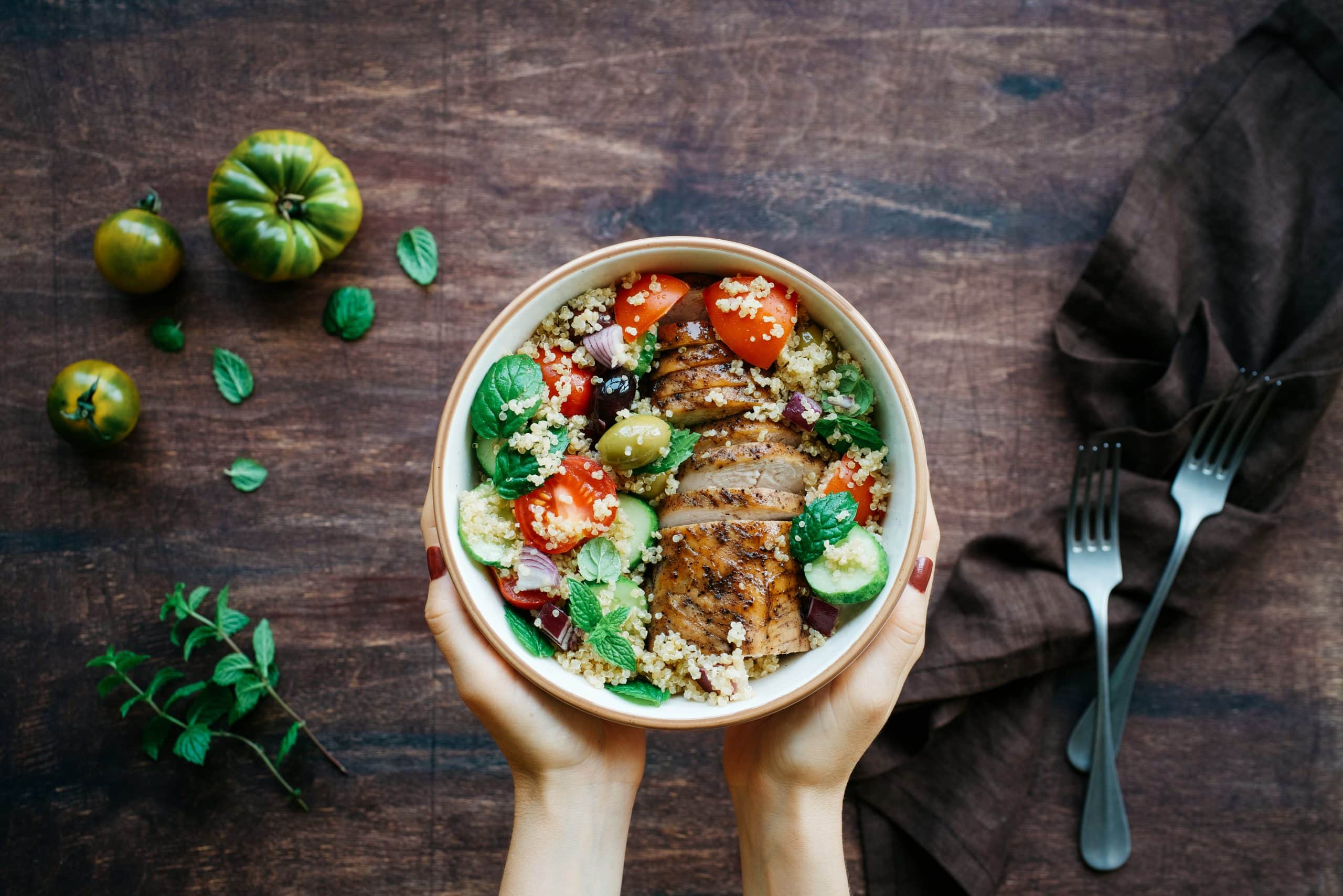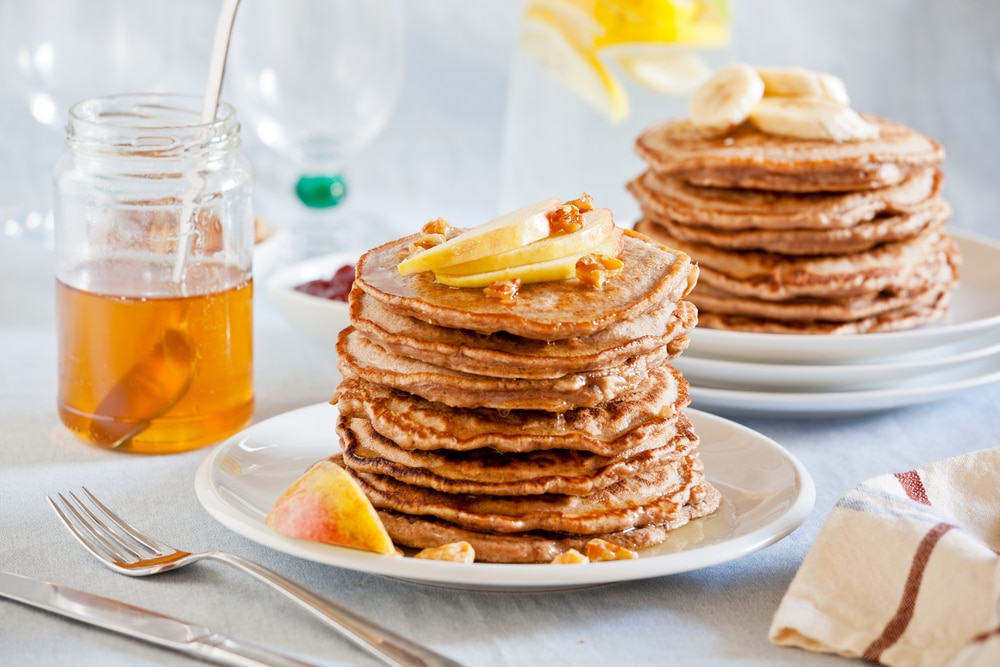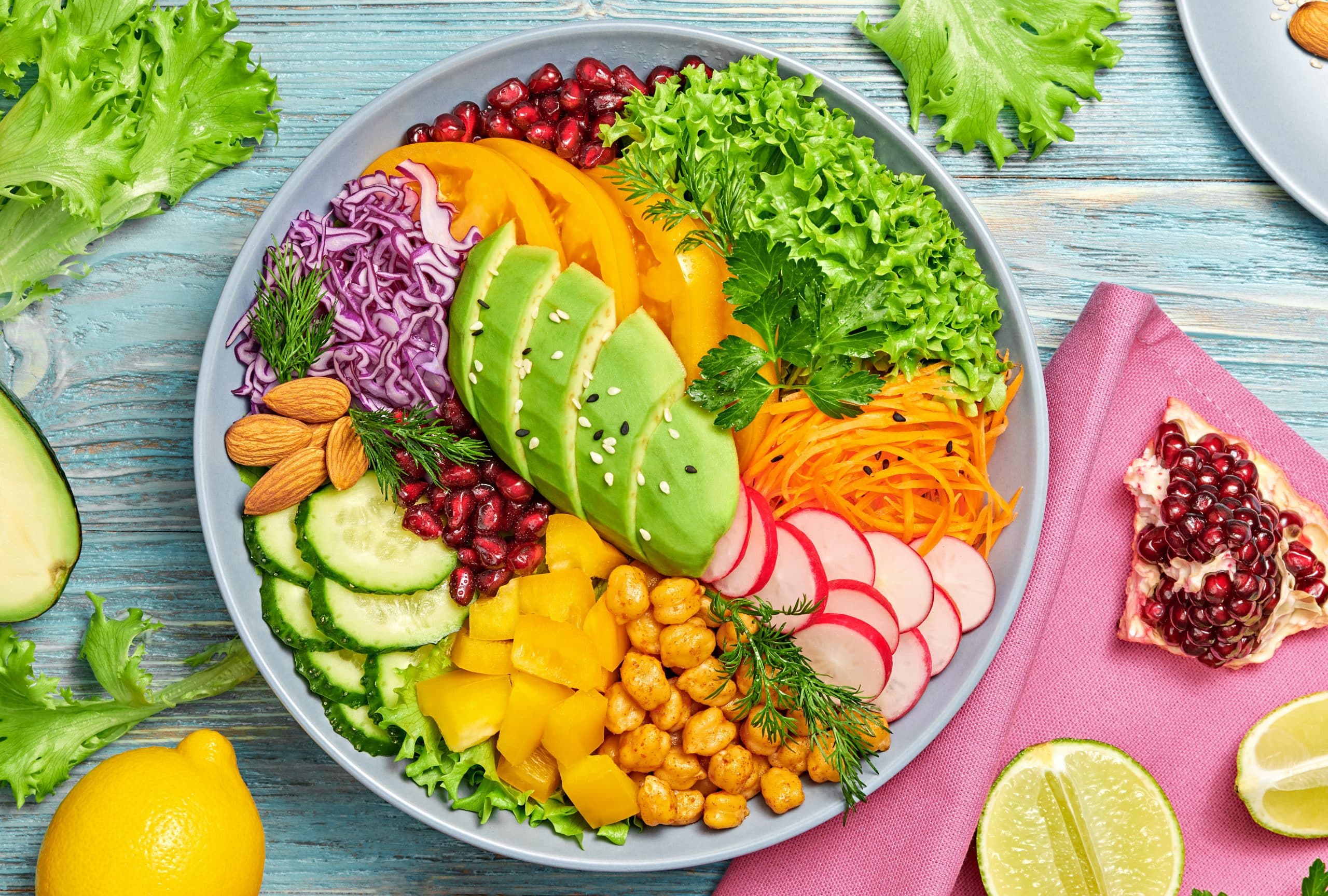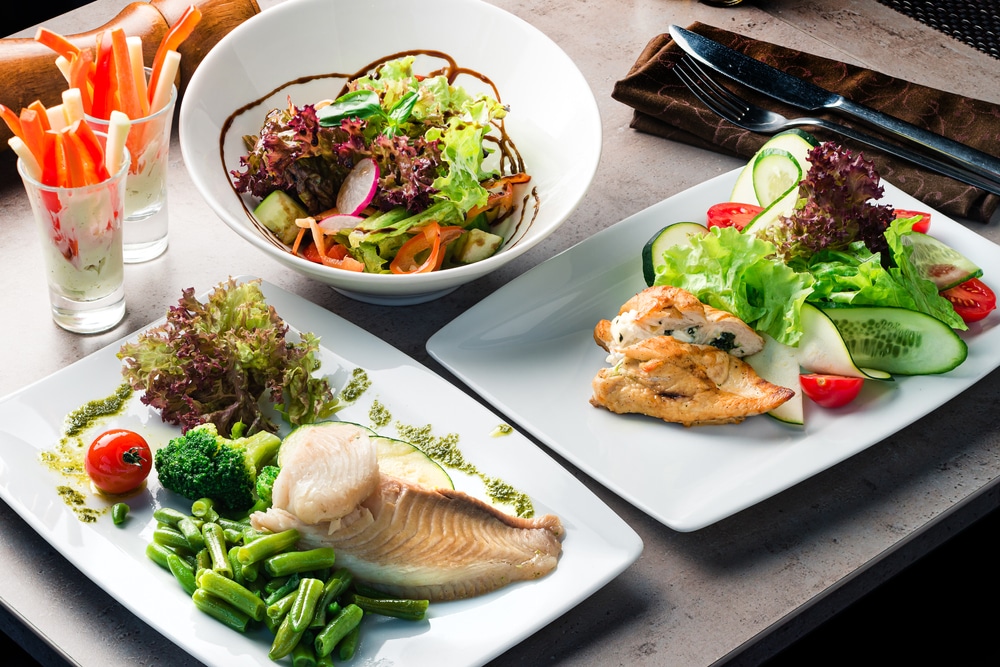High-protein diets are popular among bodybuilders and regular people who want to build muscle mass and lose fat. With the emergence and popularity of many weight loss and bodybuilding diets, it can be difficult to determine which of the many eating plans would work best for you.
The paleo diet (or paleolithic diet) is one of the many proposed high-protein eating plans that many people believe could help them reach their goals. Read on to learn more about high-protein paleo meals, approved paleo protein sources, which foods to avoid, and much more.
What Are Some Healthy High-Protein Paleo Meals?
There are a variety of high-protein paleo meals you can choose from. However, it’s important to note that the paleo meals must only include the approved protein sources for this meal plan, which include (1, 2):
- Unprocessed meats such as chicken, turkey, pork, and beef
- Eggs
- Fatty fish and other seafood – i.e. salmon, crab, trout, tuna, haddock, mackerel, shrimp, and shellfish
For example, a full day of eating on the paleo diet – breakfast, lunch, and dinner – may include some boiled eggs, chicken sweet potato soup, and roasted pork with potatoes and a side salad.
What Are the Paleo High-Protein Foods?
As seen above, the approved protein foods you can use in your paleo bodybuilding recipes include unprocessed meats, eggs, and fatty fish and seafood.
Nuts and seeds are also an excellent source of this macronutrient and are a good option for anyone who is looking for healthy high-protein paleo snacks. In addition to these protein sources, this diet also allows and encourages the consumption of fruits, non-starchy and root vegetables, fungi, and olive oil (2).
What to Avoid on a Paleo Diet
As with almost every diet out there, this eating plan comes with a list of foods that are strictly forbidden and others that can be consumed, albeit in limited amounts. The Paleolithic diet demands that those who follow it must eat how our ancestors ate back in the Paleolithic era, which is approximately 2.6 million to 10,000 years ago (3).
This automatically means that processed or ultra-processed foods, added sugars, and culinary ingredients such as additives cannot be part of your eating plan (1). As humans in the Paleolithic era were hunters and gathers, not farmers (the agricultural era developed approximately 10,000 years ago), these people didn’t consume grains and cereals, legumes, or dairy products.
Unlike processed or ultra-processed foods and added sugars, the subject of whether grains, legumes, and dairy should be prohibited on this diet remains contested. Some sources say you should exclude these foods while others state that people following this meal plan can consume them, but they’re advised to limit their intake (1, 2, 3, 4). Whole grains, legumes, and dairy are all nutritious foods that are normally recommended to be incorporated in a generally healthy and balanced diet, but they aren’t “paleo” because it’s believed that hunter-gatherers didn’t consume them in the Paleolithic era.
The BetterMe: Health Coaching app will provide you with a host of fat-frying fitness routines that’ll scare the extra pounds away and turn your body into a masterpiece! Get your life moving in the right direction with BetterMe!
What Are the Ideal Macros for Paleo?
The macronutrient distribution for the paleo diet is one that remains unclear as experts don’t seem to have one answer.
- In a study published in Nutrients in 2021, researchers stated that the estimated macronutrient distribution for this eating plan is 35% energy from fats, 35% from carbohydrates, and 30% from protein (3). These numbers were echoed two years later in another study published in late 2023 (4).
- However, in one study published in early 2023, researchers suggested that the macro distribution in this meal plan should be 37% energy from protein, 41% from carbohydrates, and 22% from fat (2).
From these findings, we cannot quite say what the ideal macros for this diet should be, but you can try and aim for either of these ranges – whichever one best suits your needs.
How Much Protein Should You Get per Day on Paleo?
As seen from the three studies above, the percentage of your protein intake per day may range between 30% and 37% of total energy. This can be your baseline for how much protein you should be consuming a day on the paleo diet.
It has been suggested that the ideal protein intake for building or maintaining muscle mass is around 1.6 g of protein per kg of body weight per day. If you’re using paleo bodybuilding recipes for muscle gain, start from here and figure out if the number you get is within the recommended percentages or not (5, 6).
Read more: Paleo Diet 7-Day Meal Plan: The Beginner’s Guide To Eating Like Our Ancestors
Can Paleo Be High-Protein And Low-Carb?
For a balanced diet, adults should get 45% to 65% of their total calories from carbohydrates, 20% to 35% from fat, and 10% to 35% from protein (7).
From the section above, it can be seen that although scientists can’t seem to agree on the ideal macro distribution for this diet, they all acknowledge that this eating plan is a moderately low carbohydrate intake diet. The numbers given also show that paleo is a high-protein diet.
While there are no specifications regarding how to make paleo a high-protein low-carb diet, you can try to consume less carbs than recommended above to make the diet lower in carbohydrates if desired.
Choosing to only consume low-carb paleo recipes is a good way to reduce your carbohydrate intake while on this eating plan. Excluding grains, and legumes and limiting your intake of root vegetables is a good way to start.
Are you curious about the best diet for weight loss and muscle gain? Check out our previous article for more details.
Can You Consume Protein Shakes on a Paleo Diet?
Yes, you can. You may think that because protein powder wasn’t around during the Paleolithic era that it’s banned from this eating plan, but that’s not the case. Protein powders are allowed on this eating plan, but only if they’re:
- Minimally processed
- Only made from high-quality protein sources such as egg whites, collagen peptides, or beef protein isolate
You’re discouraged from choosing plant-based protein powders as they are made from legumes and cereals that weren’t consumed during the Paleolithic era. Whey and casein-based protein powders are also discouraged as they’re made from milk, which isn’t included in the diet.
Read more: Paleo Vs. Vegan: What Are The Reasons Behind Their Snowballing Popularity?
What Are Some Good High-Protein Paleo Breakfast Options?
Here are some delicious high-protein meals you can use to break your fast:
Option 1 – Sweet Potato Toast with Eggs
Ingredients
- 1 large sweet potato
- Cooking spray
- Salt and pepper to taste
- 1 tbsp butter
- 4 eggs
- 1 avocado
- Crushed red pepper for serving
- Chopped parsley for serving
Directions
- Cut the sweet potato lengthwise into 4-6 pieces. The pieces should be around ¼-inch thick.
- Spray the slices with cooking spray, transfer them to a baking tray, then put the tray with the sweet potatoes in a toaster oven. Allow them to toast until they’re fork tender – 9-11 minutes.
- As the sweet potatoes cook, make your eggs and set them aside.
- Place your avocado in a small bowl, season with salt and pepper, and mash everything until it’s combined.
- Once the potatoes are done, add the mashed avocado to each slice, and then top with the eggs. Season with more crushed pepper and parsley and enjoy.
This makes 2 servings (8)
Calories for 1 serving: 439. Fats: 29 g. Carbs: 32 g. Protein: 15 g.
BetterMe is your fast-track ticket to long-lasting weight loss! Tailor your fitness journey and maximize your results with just a couple of swipes!
Option 2 – Turkey Breakfast Patties
Ingredients
- 1 ½ lbs ground turkey
- 1 tsp salt
- ¾ tsp black pepper
- 1 tsp dried thyme
- 1 tsp dried sage, crumbled
- ¼ tsp allspice
- ¼ tsp nutmeg
- ¼ tsp onion powder – optional
- ¼ tsp cayenne pepper
Directions
- Add all the ingredients to a bowl and use your hands to mix them until they’re combined.
- Wet your hands and shape the turkey mixture into medium-sized patties – this amount of ground turkey should make approximately 16 patties.
- Place a large skillet on a stove, add the patties, and cook them for 5-7 minutes on each side or until they turn golden brown.
- Take off the heat and serve immediately. The patties can be enjoyed by themselves or with some eggs and salad.
Calories for 1 patty: 111. Fats: 7 g. Carbs: 0 g. Protein: 11 g (9).
Option 3 – Egg Muffins
Ingredients
- Cooking spray or olive oil
- 8 oz sugar-free uncooked pork breakfast sausage, casings removed
- 1 cup thinly sliced cremini mushrooms
- ½ cup diced yellow onion
- 1 cup chopped baby spinach
- 8 large eggs
- 3 tbsp melted ghee
- 1 tsp kosher salt
- ¼ tsp freshly ground black pepper
Directions
- Preheat the oven to 400°F.
- Coat a muffin tin with cooking spray or olive oil and set it aside.
- In a skillet over medium-high heat, add the sausage and allow it to cook for 7-8 minutes. Remember to break up the sausage into small pieces so it cooks evenly.
- Once cooked, transfer to a bowl and combine with the mushrooms, onion, and spinach.
- Transfer this mixture to the muffin tin wells.
- Break the eggs into the same used bowl, add the ghee, salt, and pepper, and whisk until combined.
- Pour this egg mixture onto the sausage mix that’s in the muffin tins. Make sure not to fill the wells to the top. Only allow the mixture to get to ½ or ¾ full.
- Bake for 12-14 minutes until the eggs are lightly browned around the edges.
- Allow to cool before serving.
This makes 12 muffins/servings (10)
Calories for 1 muffin: 214. Fats: 17.7 g. Carbs: 2.5 g. Protein: 11.1 g
For more recipes and meal ideas, check out our article on the 30-day paleo meal plan.
It’s difficult to say. If your protein shake contains a significant amount of carbohydrates, it will likely break ketosis. However, if it doesn’t, the answer still isn’t clear because of the protein. Keto diets aren’t designed to be high in protein as any extra protein can be converted by the body into glucose, which would break ketosis. Depending on how much protein is in your shake and your individual metabolism, your protein shake may or may not disrupt ketosis. Coffee isn’t paleo as it wasn’t around during the Paleolithic era. However, many people who follow this eating plan still consume it. Yes, bananas are considered paleo and many people consume them as this eating plan encourages a high consumption of fruits. Not really. As mentioned above, the consumption of grains isn’t encouraged on this diet. Some people say that you can’t eat grains at all while others allow for limited consumption. As pasta is made from wheat, it’s best not to add it to your paleo grocery list.Frequently Asked Questions
Does a protein shake break ketosis?
Is coffee paleo?
Are bananas paleo?
Can I eat pasta on the paleo diet?
The Bottom Line
High-protein paleo meals aren’t that difficult to make, largely because many high-protein foods are included, such as unprocessed meats, poultry, fish, eggs, seeds, and nuts. The only potential issue is figuring out how to make and enjoy the same things over and over without becoming bored with them.
If you want to follow this plan, make sure you only buy unprocessed meats – try to get products from grass-fed or free-range animals.
DISCLAIMER:
This article is intended for general informational purposes only and does not serve to address individual circumstances. It is not a substitute for professional advice or help and should not be relied on for making any kind of decision-making. Any action taken as a direct or indirect result of the information in this article is entirely at your own risk and is your sole responsibility.
BetterMe, its content staff, and its medical advisors accept no responsibility for inaccuracies, errors, misstatements, inconsistencies, or omissions and specifically disclaim any liability, loss or risk, personal, professional or otherwise, which may be incurred as a consequence, directly or indirectly, of the use and/or application of any content.
You should always seek the advice of your physician or other qualified health provider with any questions you may have regarding a medical condition or your specific situation. Never disregard professional medical advice or delay seeking it because of BetterMe content. If you suspect or think you may have a medical emergency, call your doctor.
SOURCES:
- Scoping review of Paleolithic dietary patterns: a definition proposal (2021, pubmed.ncbi.nlm.nih.gov)
- The Paleolithic Diet (2023, pmc.ncbi.nlm.nih.gov)
- Paleolithic Diet—Effect on the Health Status and Performance of Athletes? (2021, pmc.ncbi.nlm.nih.gov)
- Impact of Paleo Diet on Body Composition, Carbohydrate and Fat Metabolism of Professional Handball Players (2023, mdpi.com)
- Nutrition Recommendations for Bodybuilders in the Off-Season: A Narrative Review (2019, pmc.ncbi.nlm.nih.gov)
- Systematic review and meta-analysis of protein intake to support muscle mass and function in healthy adults (2022, onlinelibrary.wiley.com)
- 2020 – 2025 (n.d., dietaryguidelines.gov)
- Sweet Potato Toast with Fried Eggs (2021, feelgoodfoodie.net)
- Homemade Turkey Sausage (2021, thespruceeats.com)
- Recipe: Easy Paleo Breakfast Egg Muffins (2020, thekitchn.com)
